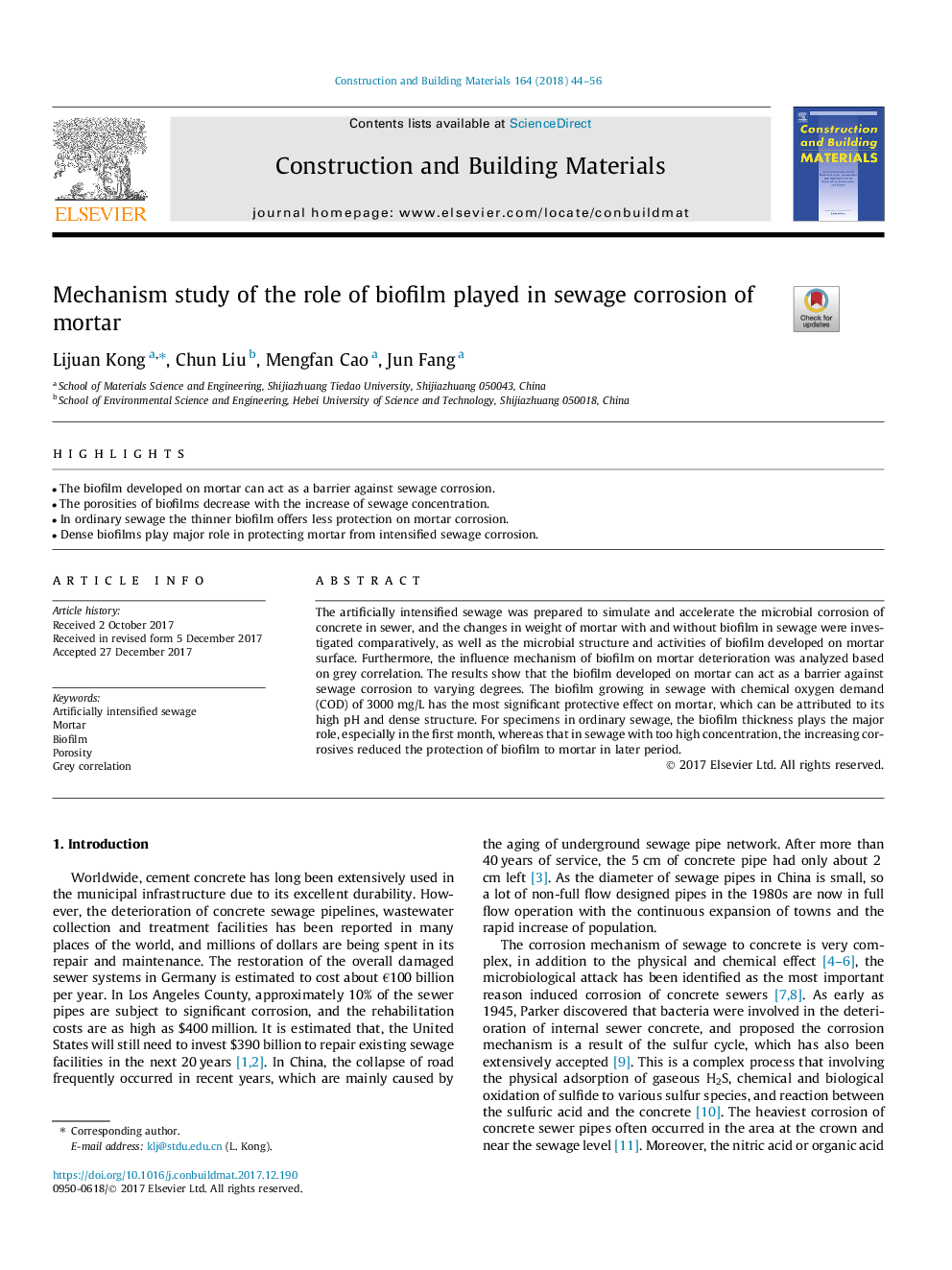| Article ID | Journal | Published Year | Pages | File Type |
|---|---|---|---|---|
| 6715856 | Construction and Building Materials | 2018 | 13 Pages |
Abstract
The artificially intensified sewage was prepared to simulate and accelerate the microbial corrosion of concrete in sewer, and the changes in weight of mortar with and without biofilm in sewage were investigated comparatively, as well as the microbial structure and activities of biofilm developed on mortar surface. Furthermore, the influence mechanism of biofilm on mortar deterioration was analyzed based on grey correlation. The results show that the biofilm developed on mortar can act as a barrier against sewage corrosion to varying degrees. The biofilm growing in sewage with chemical oxygen demand (COD) of 3000â¯mg/L has the most significant protective effect on mortar, which can be attributed to its high pH and dense structure. For specimens in ordinary sewage, the biofilm thickness plays the major role, especially in the first month, whereas that in sewage with too high concentration, the increasing corrosives reduced the protection of biofilm to mortar in later period.
Related Topics
Physical Sciences and Engineering
Engineering
Civil and Structural Engineering
Authors
Lijuan Kong, Chun Liu, Mengfan Cao, Jun Fang,
